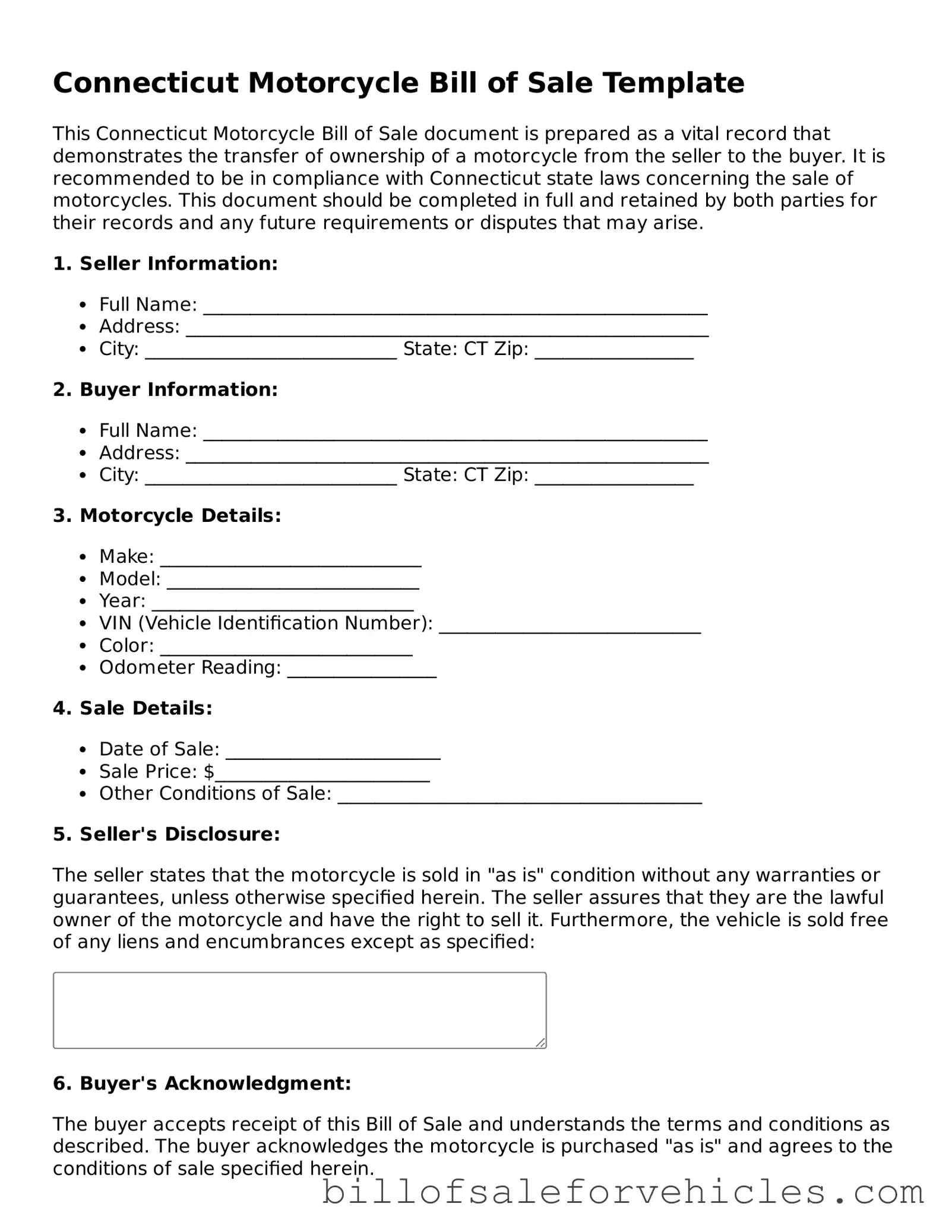What is a Connecticut Motorcycle Bill of Sale form?
A Connecticut Motorcycle Bill of Sale form is a legal document that records the sale of a motorcycle from one person to another in the state of Connecticut. This form provides important information such as the motorcycle's details, the sale price, and the identities of the buyer and seller. It serves as proof of purchase and can be used to transfer ownership.
Is a Bill of Sale required for the sale of a motorcycle in Connecticut?
Yes, in Connecticut, a Bill of Sale is required to legally sell and transfer ownership of a motorcycle. It is an essential document for both the buyer and the seller, as it officializes the transaction and can be used for registration and tax purposes.
What information should be included in a Connecticut Motorcycle Bill of Sale?
A comprehensive Connecticut Motorcycle Bill of Sale should include the following information: detailed description of the motorcycle (including make, model, year, and VIN), the sale price, the date of the sale, names and addresses of both the buyer and the seller, and signatures of both parties. Including odometer reading at the time of sale is also recommended.
Do both buyer and seller need to sign the Connecticut Motorcycle Bill of Sale?
Yes, for the document to be legally binding, both the buyer and the seller must sign the Connecticut Motorcycle Bill of Sale. It is advised to also have the signatures witnessed by a notary public to add an extra layer of authenticity and protection for both parties.
How does the Connecticut Motorcycle Bill of Sale benefit the buyer?
For the buyer, the Connecticut Motorcycle Bill of Sale acts as proof of ownership and purchase. It is necessary for the registration of the motorcycle in the buyer’s name and may be required for insurance purposes. Additionally, it provides legal protection in case any disputes arise regarding the motorcycle’s condition or ownership.
How should one proceed after completing the Bill of Sale?
After completing the Bill of Sale, the buyer should submit it along with the necessary documents to the Connecticut Department of Motor Vehicles (DMV) to officially transfer the motorcycle's title and registration into their name. It is also advisable for both parties to keep a copy of the Bill of Sale for their records.
